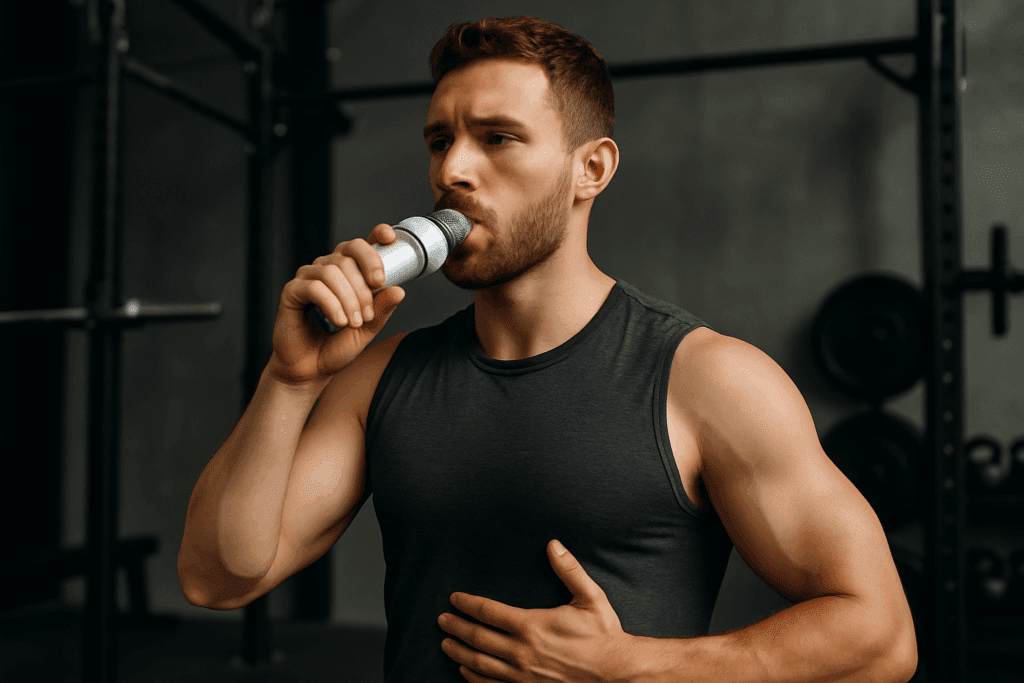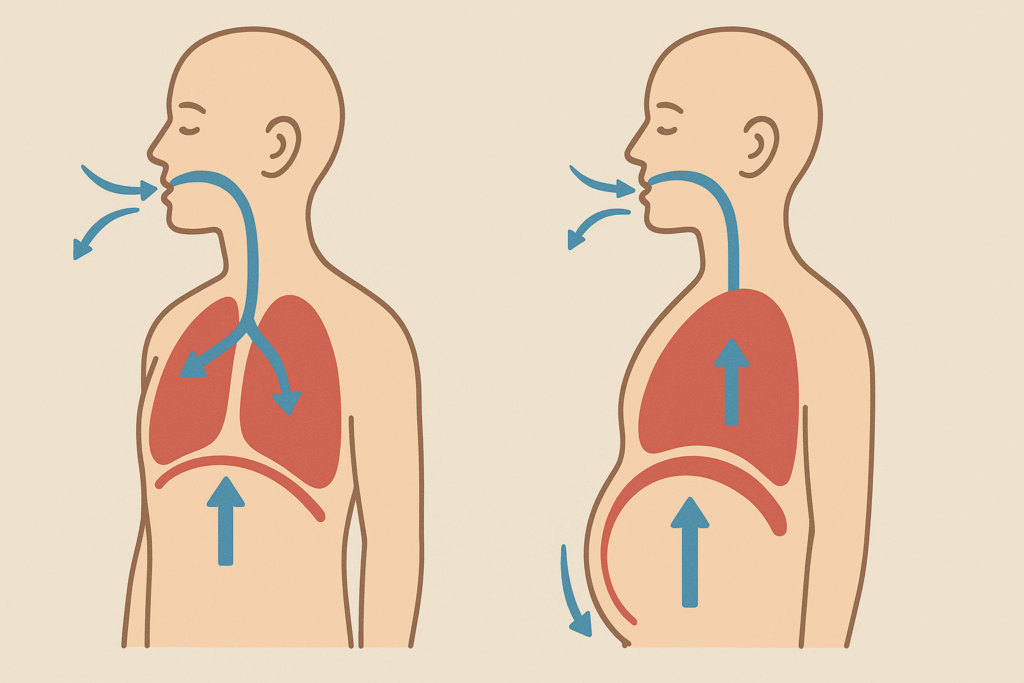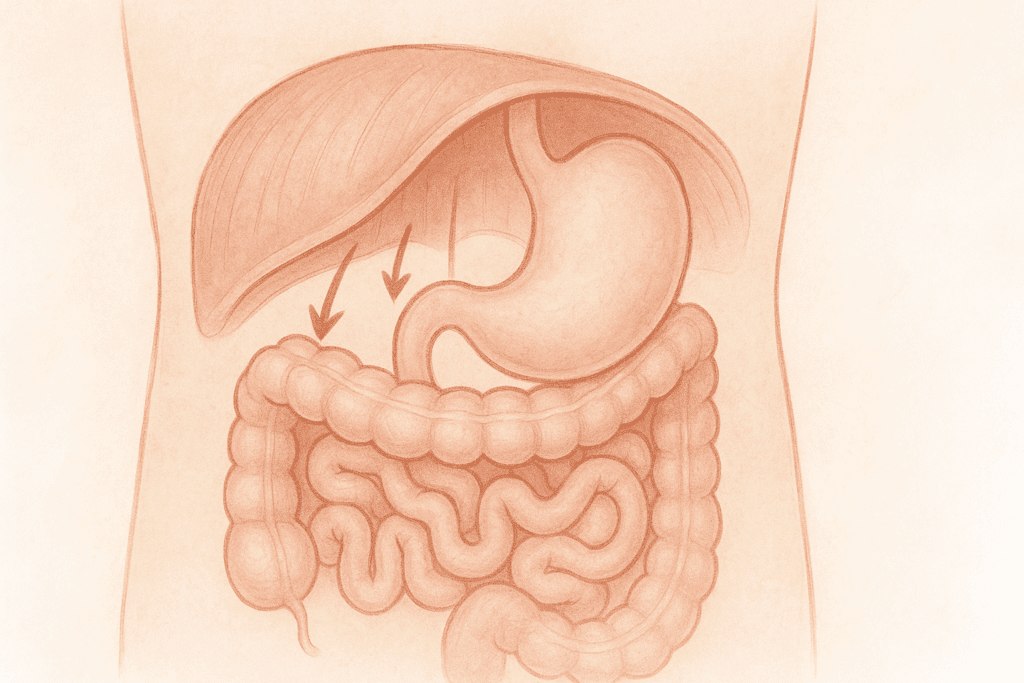Unlocking the Power of Your Breath
Breathing may seem automatic, but how you breathe can significantly affect how well your body performs—especially under physical stress. In the realm of endurance and stamina training, one of the most powerful yet underutilized tools is diaphragmatic breathing. Often referred to as belly breathing or abdominal breathing, this technique relies on deep, controlled inhalation using the diaphragm rather than the chest. Understanding the difference between abdominal breathing vs chest breathing is essential for anyone aiming to boost performance, reduce fatigue, and enhance recovery.
The science of breathing goes beyond just inhaling and exhaling. When you engage in diaphragmatic breathing, you activate a large, dome-shaped muscle that sits beneath the lungs—the diaphragm. Unlike thoracic breathing, which is shallow and mostly uses the upper chest, diaphragmatic breathing involves a fuller, deeper intake of air, drawing oxygen into the lower lungs where gas exchange is most efficient. This is why many athletes and coaches now prioritize learning how to breathe using your diaphragm during both training and competition.
You may also like: Smart Nutrition Choices for a Healthier Lifestyle: What to Know About Whole Grain Rice and Whole Wheat Rice

The Mechanics and Benefits of Diaphragmatic Breathing
To truly appreciate the benefits of diaphragmatic breathing, it’s helpful to visualize what happens inside the body. During inhalation, the diaphragm contracts and moves downward, creating space for the lungs to expand. As the lungs fill with air, the abdomen rises, which is why this is also referred to as belly breathing or tummy breathing. For many, seeing the stomach rise and fall during breathing can be a helpful cue for proper technique. While some may wonder, “Is belly breathing bad?”, the reality is quite the opposite—when done correctly, it’s a sign of efficient oxygen intake and stress regulation.
Athletes who incorporate diaphragmatic breathing exercises into their training often experience increased stamina, better oxygenation, improved mental focus, and reduced lactic acid buildup. This deeper breathing pattern also activates the parasympathetic nervous system, promoting calmness and recovery. When comparing chest breathing vs stomach breathing, it becomes clear that abdominal breathing is far superior for sustaining energy over long periods, especially in endurance events.
Why You Need Your Stomach to Move When You Breathe
A common question people ask is, “Why do you need your stomach to breathe?” Technically, you don’t breathe with your stomach, but the stomach’s movement reflects correct diaphragm engagement. When the diaphragm contracts during inhalation, it pushes downward on the abdominal organs, which causes the belly to expand. This is what effective belly breathing looks like, and it allows air to flow into the lower parts of the lungs, which are typically underused during shallow breathing.
This type of breathing not only improves oxygen intake but also supports better core stability and posture. That’s because the diaphragm interacts closely with other core muscles, including the pelvic floor and abdominal wall. Together, they help maintain spinal alignment and internal pressure. It’s no surprise, then, that what happens to your diaphragm when you exhale is equally important—it relaxes and returns to its dome shape, pushing air out efficiently and resetting the breathing cycle.

Strengthening the Diaphragm for Performance Gains
Like any muscle, the diaphragm can be trained to become stronger and more efficient. Athletes and fitness enthusiasts can benefit greatly from incorporating diaphragm muscle exercises into their routines. These include resisted breathing, using tools like inspiratory muscle trainers, and breath-holding techniques during low-impact cardio or yoga. Over time, these diaphragm strengthening exercises increase respiratory endurance and make abdominal breathing a natural default even under stress.
Learning how to strengthen your diaphragm muscle not only enhances oxygen efficiency but also reduces the energy cost of breathing. This becomes crucial during long bouts of physical exertion when conserving energy can mean the difference between maintaining pace and hitting a wall. Whether you’re a distance runner, a swimmer, or a cyclist, a stronger diaphragm translates to longer-lasting performance.

How to Practice Diaphragmatic Breathing Daily
One of the most accessible ways to build this skill is through simple, focused belly breathing exercises. A good starting point is lying on your back with one hand on your chest and one on your abdomen. As you inhale slowly through your nose, aim to move only the hand on your belly. Exhale gently through your mouth. This practice helps you become more aware of your breathing pattern and gradually shifts it toward more efficient stomach breathing.
Once mastered, these techniques can be integrated into workouts, meditation sessions, or even everyday moments like sitting at your desk. The key is consistency. Just five to ten minutes of diaphragmatic breathing each day can help reset your diaphragm, improve lung capacity, and promote better overall breathing mechanics.

Breathing and Mental Clarity Under Pressure
Aside from physical performance, diaphragmatic breathing offers profound mental benefits. Controlled breathing activates the vagus nerve, which plays a major role in calming the nervous system. This is why athletes who know how to reset their diaphragm through breathwork often perform better under pressure. When the body feels secure, the mind can focus, and anxiety levels drop. This enhanced mind-body connection can be a competitive advantage, particularly in endurance sports that demand both physical and psychological resilience.
Moreover, learning how to breathe from the diaphragm can be part of a larger strategy to regulate emotions and manage stress. It’s one of the few tools that’s always available, always free, and always effective when applied correctly.

Debunking Myths About Belly Breathing
Despite its numerous benefits, misconceptions about belly breathing persist. Some worry, “Is it better to breathe with chest or stomach?” or assume that belly breathing is too passive to be effective. The truth is, while thoracic breathing might be beneficial for short bursts of power or heavy lifts, diaphragmatic breathing is the clear winner for endurance, recovery, and emotional control.
Understanding abdominal breathing vs chest breathing helps to dispel the myth that deeper, slower breathing is somehow less powerful. In reality, it’s more efficient and allows for sustained output without overtaxing the respiratory system. With proper technique and repetition, anyone can experience the belly breathing benefits that elite athletes and health professionals frequently endorse.

Rehabilitative and Digestive Benefits of Proper Breathing
Beyond performance, diaphragmatic breathing has applications in rehabilitation and gastrointestinal health. Individuals recovering from injury or surgery often experience restricted breathing due to pain or immobility. Incorporating breathing exercises for stomach pain or postural therapy can restore normal respiratory patterns and promote healing.
When the diaphragm functions optimally, it massages internal organs, enhances circulation, and supports digestion. This can be especially helpful for those who experience exercise-related bloating or cramps. In such cases, the answer to can you strengthen your diaphragm? becomes not just a fitness strategy, but a pathway to overall wellness.
Frequently Asked Questions (FAQ): Diaphragmatic Breathing for Endurance and Stamina
1. Can diaphragmatic breathing improve performance in non-athletic activities, such as public speaking or singing?
Absolutely. Diaphragmatic breathing isn’t exclusive to athletes—it’s also highly beneficial in activities that demand vocal control, emotional regulation, and prolonged focus. For public speakers and performers, abdominal breathing vs chest breathing can make a substantial difference in vocal projection and stamina. Proper diaphragmatic control stabilizes airflow and improves pitch control, especially during extended monologues or musical phrases. Moreover, practicing how to breathe from the diaphragm helps reduce stage fright by calming the nervous system. The ability to reset your diaphragm before stepping on stage can lower cortisol levels and enhance mental clarity.
2. How does long-term chest breathing affect the body’s posture and core strength?
Thoracic breathing, when it becomes habitual, can lead to postural imbalances and weakened core engagement. Because chest breathing overactivates accessory muscles in the neck and shoulders, it often results in tension and misalignment. This breathing pattern also bypasses the diaphragm’s role in core stabilization, causing the lower abdominal and spinal muscles to underperform. In the long run, relying solely on thoracic breathing may increase your risk of injury, particularly in dynamic sports or occupations requiring repetitive motion. Switching to abdominal breathing not only improves breath efficiency but also supports spinal integrity and functional core strength.
3. Are there advanced diaphragm muscle exercises for elite endurance athletes?
Yes, elite athletes can enhance their respiratory capacity through structured diaphragm strengthening exercises. These go beyond basic belly breathing and include resisted inhalation using devices such as inspiratory muscle trainers. These tools create controlled airflow resistance, forcing the diaphragm to work harder and become more resilient. Another advanced method involves hypoxic breath holds, where athletes train in low-oxygen conditions to simulate high-altitude performance. These high-level strategies allow the diaphragm to adapt to stress, improve recovery time, and support optimal oxygen utilization during peak exertion.
4. What role does belly breathing play in recovery after high-intensity exercise?
Post-exercise recovery depends heavily on the body’s ability to return to parasympathetic dominance, where rest and repair can occur. Belly breathing accelerates this transition by stimulating the vagus nerve and reducing heart rate and blood pressure. In contrast, chest breathing vs stomach breathing post-workout often leaves the body in a sympathetic, stress-driven state. A consistent belly breathing exercise after training can speed up muscle repair and reduce inflammation. Over time, this recovery-focused approach contributes to long-term endurance gains and injury prevention.
5. Can diaphragmatic breathing help manage chronic conditions like asthma or anxiety?
Indeed, diaphragmatic breathing can be a powerful tool in managing both respiratory and psychological conditions. For individuals with asthma, strengthening the diaphragm improves breath control and reduces reliance on accessory muscles, easing symptoms during flare-ups. Practicing how to breathe using your diaphragm also improves oxygen uptake and helps prevent hyperventilation during panic attacks. The rhythmic pattern of belly breathing has a grounding effect, lowering the frequency and intensity of anxiety episodes. It’s a safe, drug-free intervention that supports both emotional resilience and respiratory efficiency.
6. How can someone identify if they are truly practicing stomach breathing versus shallow chest breathing?
Recognizing the difference between abdominal breathing vs chest breathing begins with body awareness. Place one hand on your chest and the other on your stomach while lying down or seated comfortably. During true belly breathing, only the hand on your stomach should rise during inhalation. This visual cue clarifies what does belly breathing looks like and helps establish a baseline for diaphragmatic activation. If both hands rise or the chest moves more than the abdomen, you’re likely defaulting to shallow thoracic breathing.
7. Is there such a thing as too much belly breathing or overusing the diaphragm?
While diaphragmatic breathing is generally safe, improper technique or forced exaggeration can cause discomfort. Overinflating the abdomen without controlled exhalation may create intra-abdominal pressure that leads to lightheadedness or digestive upset. This is why understanding how to practice diaphragmatic breathing correctly is essential, particularly when applying it during physical activity. Balance is key: belly breathing should feel natural and smooth, not strained. If discomfort arises, it may indicate a need to slow the pace or adjust posture.
8. What makes diaphragmatic breathing more efficient than thoracic breathing during endurance events?
The key advantage lies in the oxygen economy. Diaphragmatic breathing draws air into the lower lungs, which are rich in blood vessels and ideal for gas exchange. In contrast, thoracic breathing tends to be shallow, requiring more breaths to achieve the same level of oxygenation. For endurance athletes, this means more energy spent on breathing and less oxygen available for working muscles. When comparing chest breathing vs stomach breathing under stress, belly breathing consistently leads to greater efficiency and lower perceived exertion.
9. Can breathing techniques like tummy breathing be taught to children or used in schools?
Yes, tummy breathing is an excellent technique for children, especially those dealing with anxiety, ADHD, or emotional dysregulation. It can be introduced through playful exercises like “breathing buddies,” where a stuffed animal is placed on the belly to visualize the rise and fall. Teaching how to inhale and exhale slowly from the abdomen also helps children become more self-aware and better at managing stress. Schools that incorporate mindfulness programs often include belly breathing exercises to support emotional intelligence and classroom focus. Early adoption of abdominal breathing can set the foundation for lifelong wellness.
10. What are the latest innovations in breathing training for endurance performance?
Recent advancements in biofeedback and wearable technology have revolutionized how we measure and train breath performance. Smart devices can now track respiratory rate, diaphragm engagement, and even variability between abdominal breathing vs chest breathing patterns in real-time. These insights help athletes refine their technique with immediate feedback. New research also explores virtual reality environments for guided diaphragmatic breathing exercises, making training more immersive and personalized. These innovations suggest a future where optimizing how to strengthen the diaphragm becomes as integral to training as nutrition or strength work.
Conclusion: How Mastering Diaphragmatic Breathing Elevates Endurance and Stamina
Breathing is one of the few bodily functions we can control voluntarily, and learning to master it through diaphragmatic breathing is one of the smartest decisions any athlete or wellness-seeker can make. From boosting oxygen delivery and mental clarity to supporting recovery and core stability, the benefits of diaphragmatic breathing are vast and scientifically grounded. Whether you’re comparing abdominal breathing vs chest breathing, exploring how to strengthen your diaphragm, or seeking ways to improve stamina and calm through belly breathing exercises, the path forward is clear. Your breath is more than an involuntary reflex—it’s a tool. And when used with intention, it becomes a gateway to better performance, greater endurance, and a healthier, more resilient life.
Was this article helpful? Don’t let it stop with you. Share it right now with someone who needs to see it—whether it’s a friend, a colleague, or your whole network. And if staying ahead on this topic matters to you, subscribe to this publication for the most up-to-date information. You’ll get the latest insights delivered straight to you—no searching, no missing out.
Further Reading:
Breathing Exercises to Increase Lung Capacity
Disclaimer
The information contained in this article is provided for general informational purposes only and is not intended to serve as medical, legal, or professional advice. While NewsHealthWatch strives to present accurate, up-to-date, and reliable content, no warranty or guarantee, expressed or implied, is made regarding the completeness, accuracy, or adequacy of the information provided. Readers are strongly advised to seek the guidance of a qualified healthcare provider or other relevant professionals before acting on any information contained in this article. NewsHealthWatch, its authors, editors, and contributors expressly disclaim any liability for any damages, losses, or consequences arising directly or indirectly from the use, interpretation, or reliance on any information presented herein. The views and opinions expressed in this article are those of the author(s) and do not necessarily reflect the official policies or positions of NewsHealthWatch.

